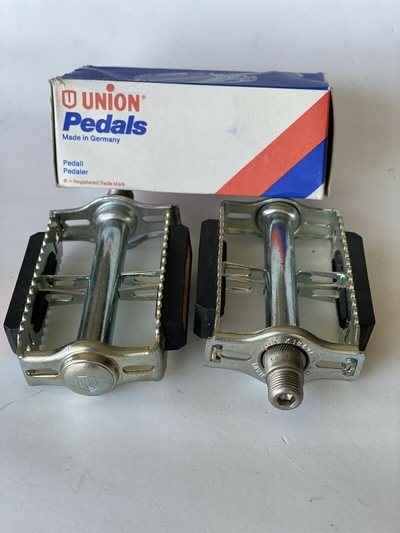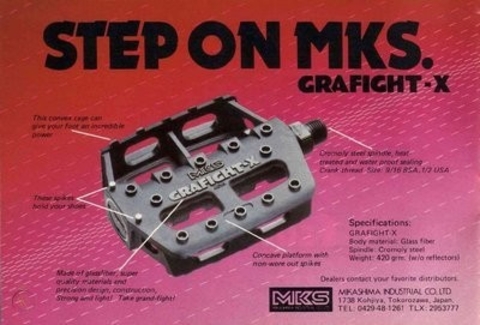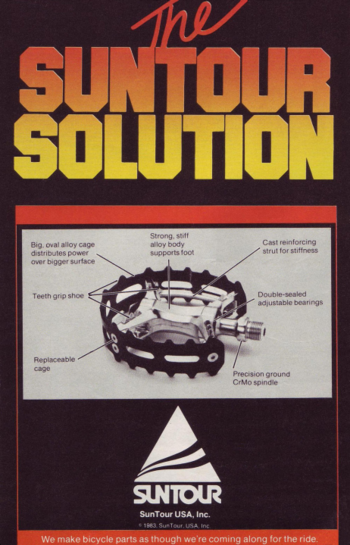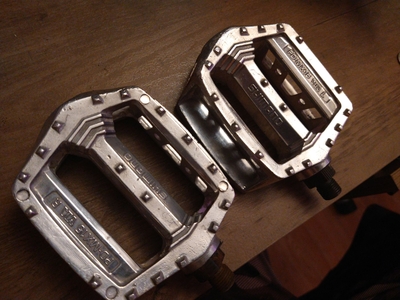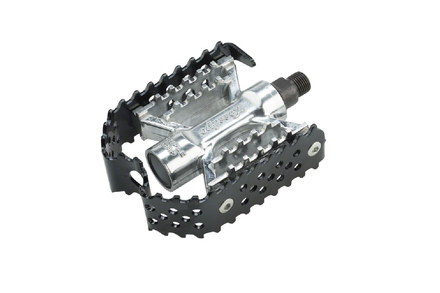Table of Contents
Pedals
In 1990, Shimano's new mountain pedal system, Shimano Pedaling Dynamics, completely changed how people connected with their bikes. Prior to SPD, most people strapped their street shoes to their bikes using metal cages and leather straps. They relied on toe straps to keep them bound to their bikes even throughout a crash. Stop signs were tricky and remounting required strap fiddling while pedaling. Even today, toe straps continue to be used by some sprinters and track racers to reliably stay attached.
Now we have a half a dozen “clipless” systems, with their own families of special cleats, pedals and shoes. What was special about Shimano's SPD system was that for the first time you could use “normal” shoes, which you would need when pushing or carrying your bike uphill, or when simply walking to and from the bike. Once again, mountain bikes helped bring cycling to the people.
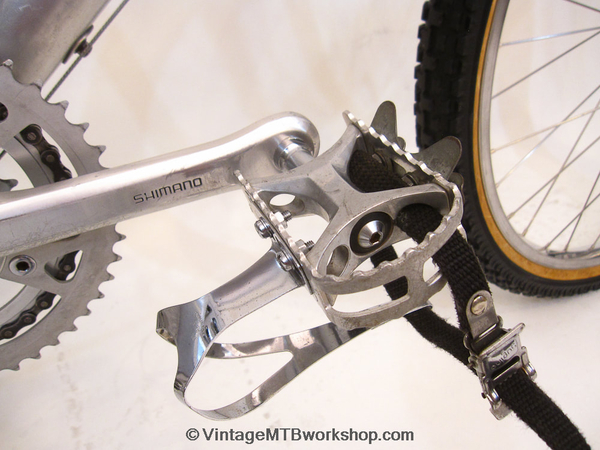
Toe straps on a mountain bike.
1983 Cunningham Indian, vintagemtbworkshop 1)
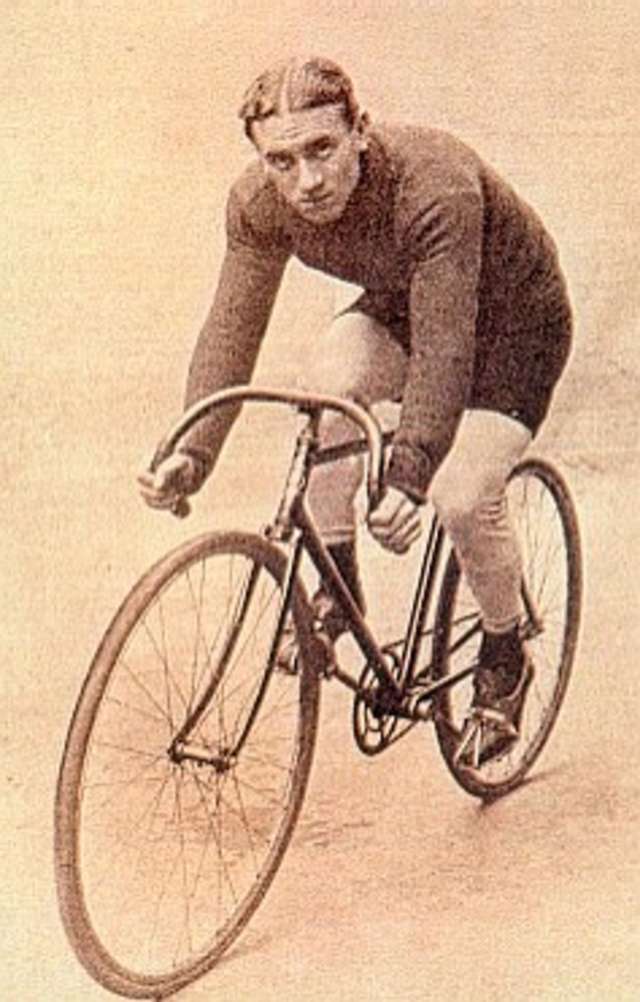
ca. 1912, Philippe Thys, three time Tour de France winner, trusting his toe straps on a brake-less fixie.
Clipless History
Clipless cycling pedals have been available since 1895, requiring special shoes with bolted in cleats which click into special pedals which hopefully let you disengage with a simple twist. All clipless pedals should also allow some “float” to allow for natural twisting and differences in people's feet.
“Clipless” refers to the lack of toe straps. However, all clipless pedals require you to clip in to engage or disengage. 2)
Until the mid-80's, a few serious mountain bikers would strap their feet to their pedals with leather buckles wound through a large, front toe clip. If you were willing to glue your feet to your early mountain bike, even through switchbacks and crashes, then you would use clips and straps. Today, mountain bike racers will often use simple flat pedals, without straps or bindings, trading the convenience of the quick touch of a toe to the ground and forgoing the advantages of eliminating foot slippage, pedaling efficiency, and easy bunny hops.
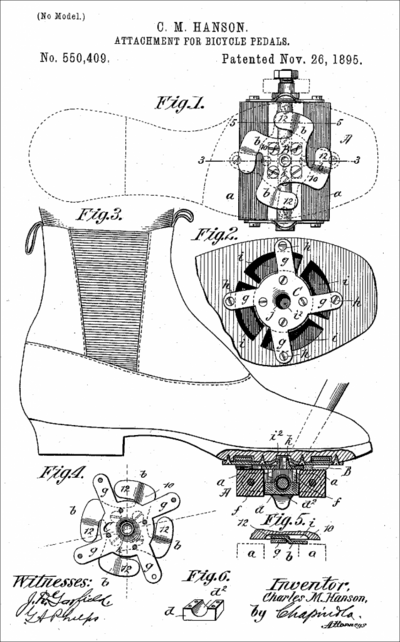
1895 clipless pedals patent wheelies
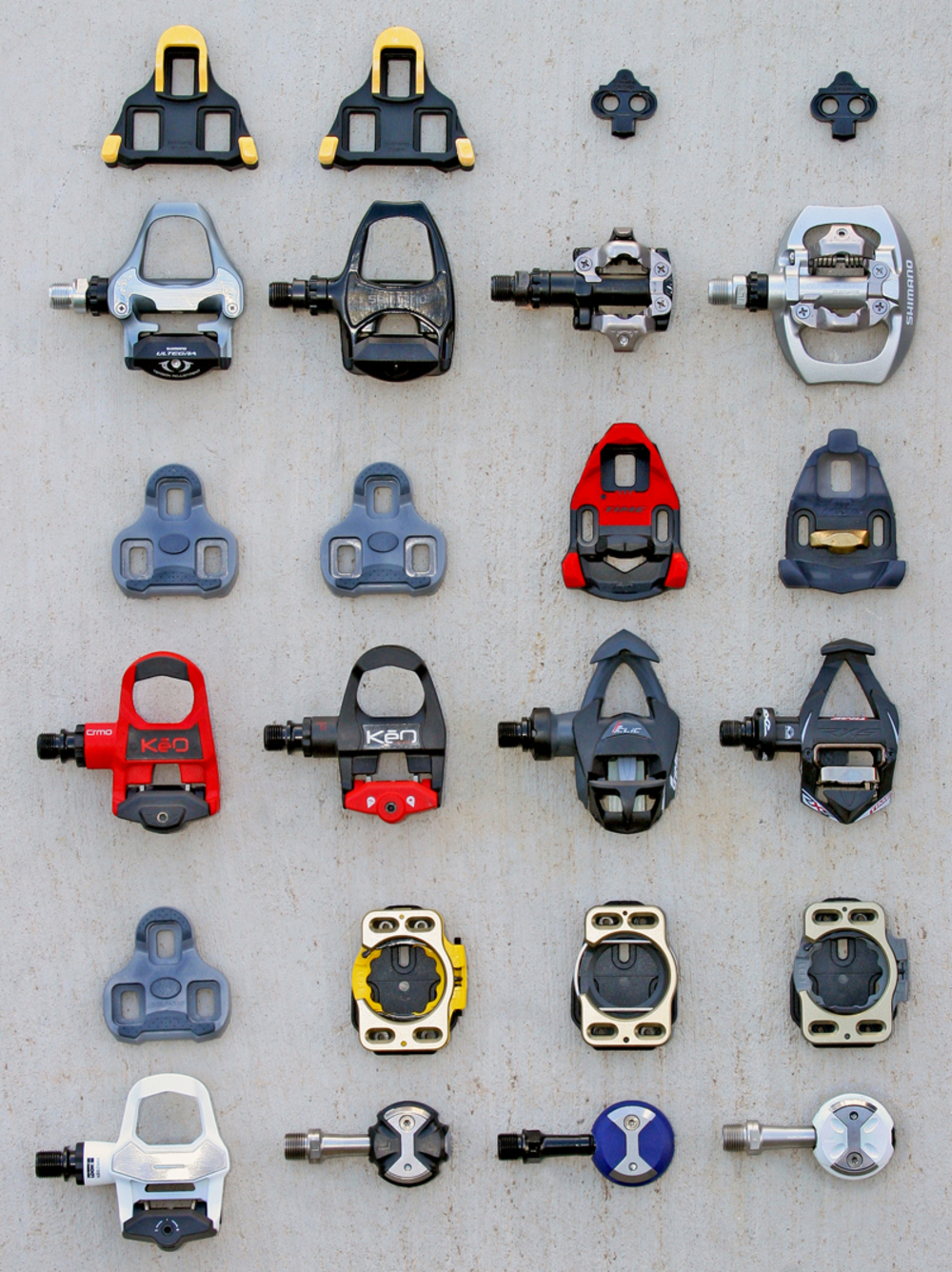
Pedal types trisports. See also: speedplay museum
The modern clipless era began in 1984 when the Ski manufacturing brand Look adopted a similar mechanism to the one used in fastening one’s feet to a ski and put it on a bike pedal. The real explosion of this pedal onto the professional stage came in 1988 following victories in the Tour, Giro and World Championships all with clipless pedals being used. steel-vintage.com
In 1987, Jean Beyl, the founder of Look, inventor of skiing quick releases, ski brakes and author of 100's of cycling patents, left Look to found Time, creating a new pedal system with improved rotational and lateral movements. “In 1989 the majority of riders in the Tour de France, including winner Greg LeMond, were using Time pedals.”3)
At this point, the cleat systems and rigidity for all clipless cycling shoes made it impossible (and dangerous!) to walk further than a bench (or café chair) to one's bike. Waddling through stores in metal road cleats is often explicitly prohibited, especially with wooden floors. Today, the road and mountain shoe & pedal worlds remains highly segregated. Despite mountain SPD shoes being eminently practical, stylish and stealth, road bikers prefer super light weight, shiny plastic shoes to match their team lycras.
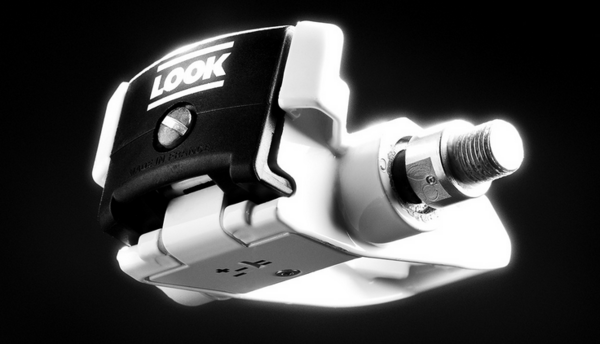

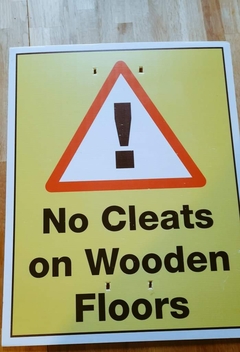
Look PP54 cleats and shoes, 1984 inrng, bikeforums
Road cleats belong on the bike, not the ground facebook
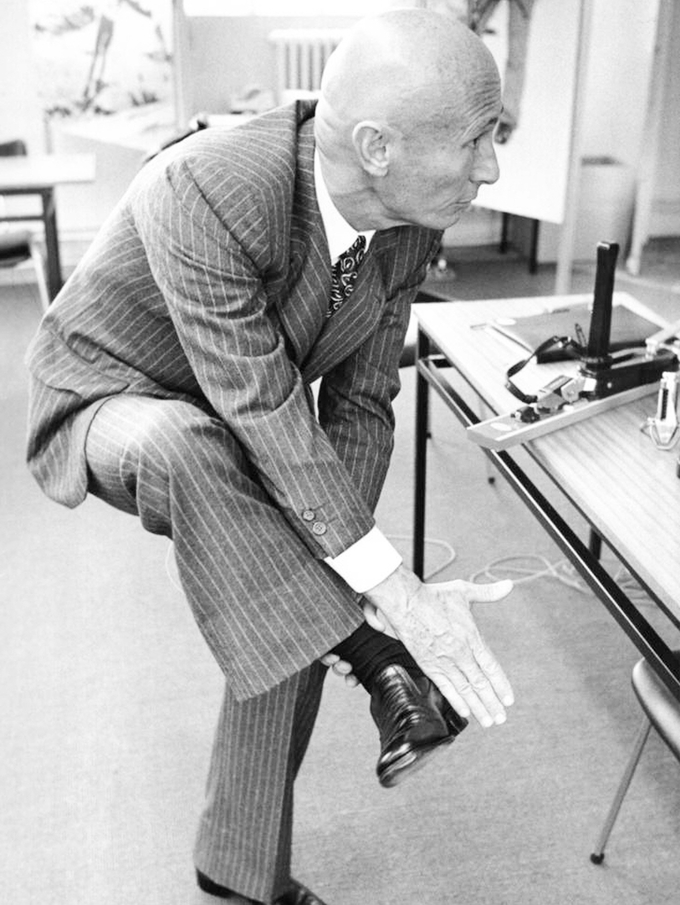
Jean Beyl, adding cleats to his Ferragamos lookcycle
Shimano SPD
In 1990 Shimano brought clipless to the masses with the SPD pedal and cleat system. Developed for mountain bikes, tiny cleats could be recessed into comfortable and normal looking shoes. No more walking like a duck or dreading smoothly tiled floors. Instead you could easily get off your bike and push it up hill, something which was completely impossible with all other cleats.
4)
Clipless isn't for everyone. It's easy to get stuck in one's pedals when you desperately need to put a foot down. SPD's small cleats are notoriously tricky to reengage quickly when you're bouncing downhill. They're useless when you've forgotten to bring your “special shoes.”5) They cost more. There's a learning curve, which isn't too steep but will involve a few foot faults and scrapes at your first stop sign.
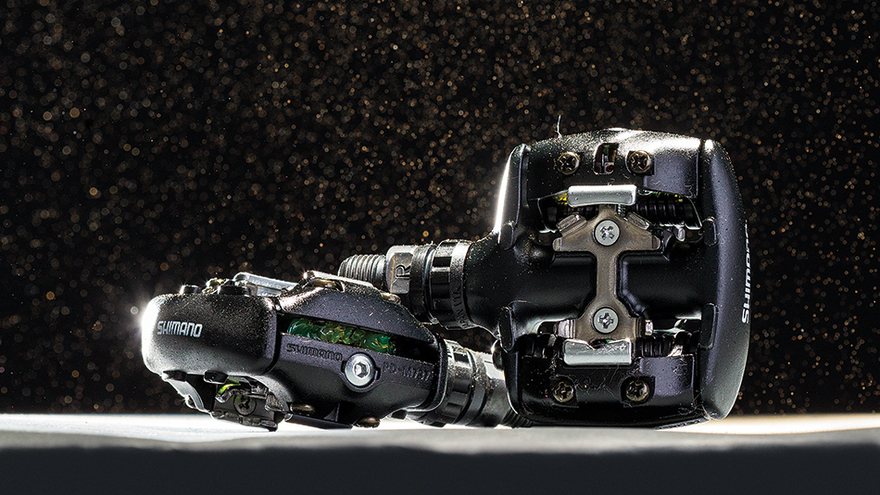
Shimano M737 pedals, 1990, bikemag
Other Clipless
Look, Time & SPD may have dominated the market in their day, but… OK, they continue to dominate, as no new competing system has come out which betters theirs. There are two newer systems: Crank Brothers and Speedplay, which remain niche. An alphabetical list of today's systems:
- Crank Bros: mountain specific systems featuring their light weight egg beater style.
- Look: the original and perhaps most popular road pedal.
- Shimano MTB : Shimano SPD mountain specific.
- Shimano Road: Shimano stretched the SPD branding out a bit and now call their road cleats SPD-SL - but it's totally unrelated to the SPD design.
- Speedplay: “Lollipop” road pedals. They used to have a mountain pedal where the lollipop was permanently part of the shoe.
- Time: now have both road and mountain cleats, pedals and shoes.
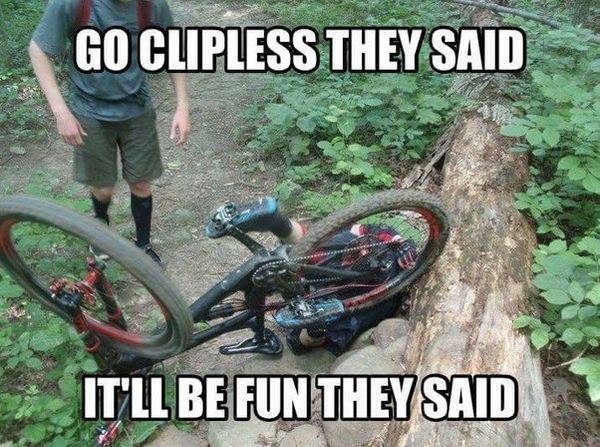
Go clipless quora
Flat Pedals
The very first mountain bike pedals, if the first MountainBikes catalogs are anything to go by, didn't offer much choice: narrow road pedals or gripless BMX.
- 1980 : Union Rat Trap : basic road pedal ebay
- 1982 : MKS Grafight-X (plastic!) worthpoint
- 1983 : SunTour XC-II : The SunTour pedals would be spec'd on all Ritchey mtbs until 1987. bluelug
The next generation of flat pedals would give a broader platform, with more grip and blunter teeth to avoid biting into shins.
- 1983: Shimano PD-MX15 : very popular bmxmuseum
- 1987: Shimano Deore XT : spec'd on most high end “racing” mountain bikes in the late 80's. Usually paired with toe straps. bmxmuseum
- 1990: Odyssey Triple Traps : the search for more traction gone too far odysseybmx
Removable Pins
In the late 90's flat pedals with removable pins for adjustable traction became available. [Which was first? More research needed.]
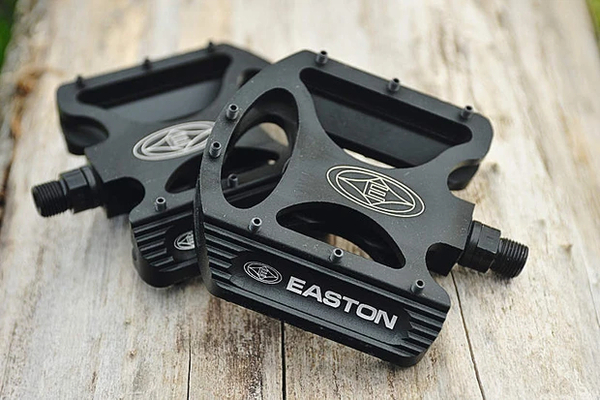 1999: Easton Flatboy & Cully bikerader
1999: Easton Flatboy & Cully bikerader
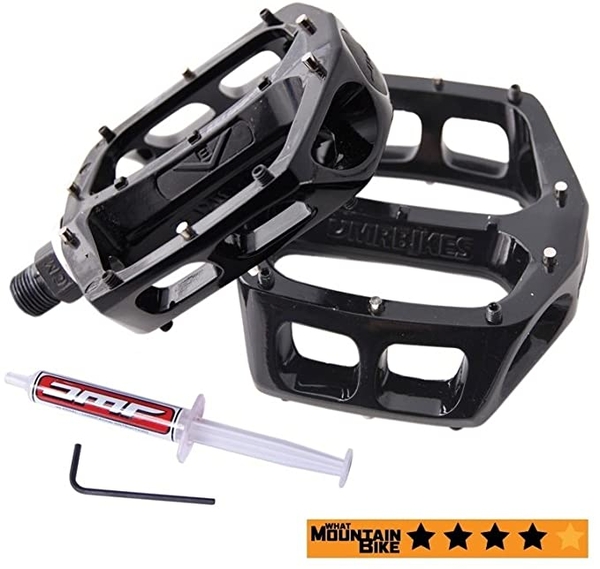
1998: DMR V8, amazon
Axles & Bearings
Bicycles are all about spinning freely: wheels, cranks, pedals, etc. All relying on the not-so-simple bearing. Pedal bearings are so often overlooked and so many bikes come with pedals which don't spin freely, robbing power with friction. Plus, the axle has to be resilient to a huge amount of stress - not to mention that the pedal, sticking out the furthest, takes the brunt of most crashes. Today, the best pedals have sealed cartridge bearings - which, interestingly, Shimano doesn't sell.6) Crank Brothers, Look and Time all use sealed bearings.
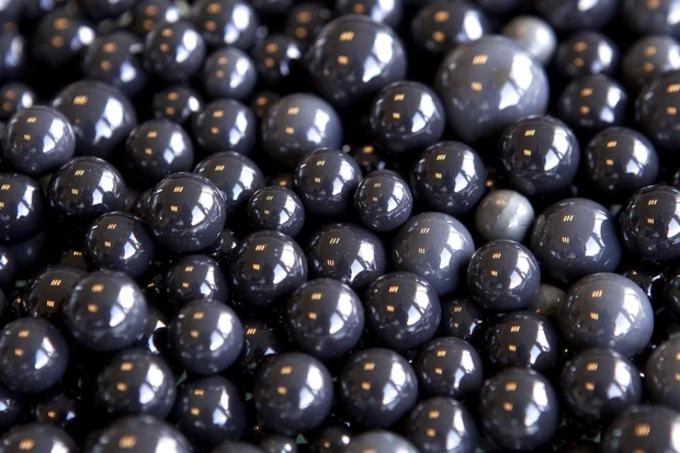
Looks like caviar and is similarly expensive – Jack Luke, bikeradar
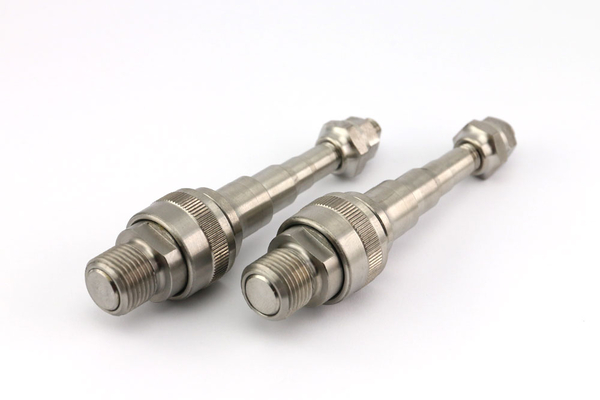
MKS Ti quick release axles, bike48
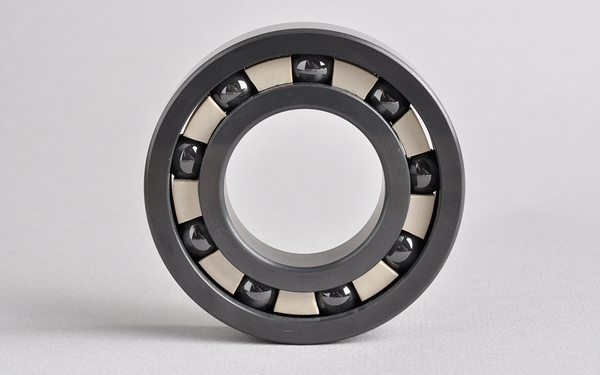
Hybrid ceramic bearing hawk-racing


